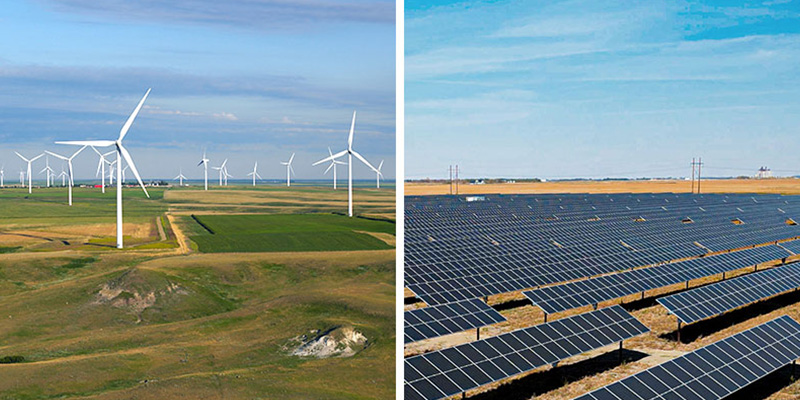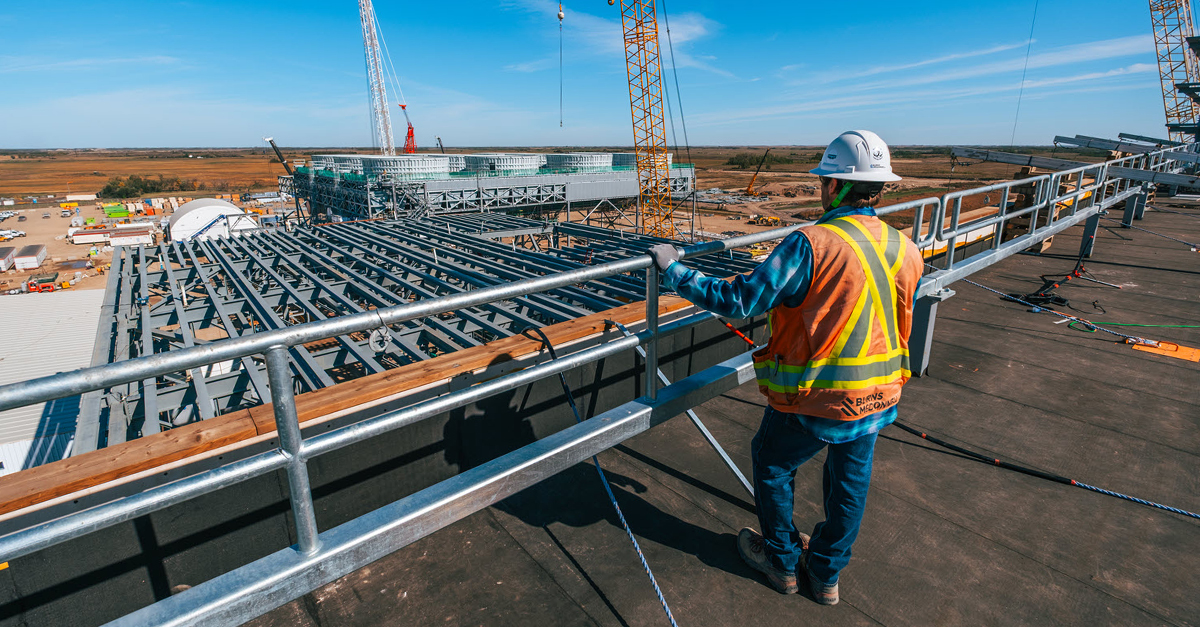How Wind And Solar Power Supports Rural Saskatchewan
September 06, 2024

Quotables:
- We’re on track to achieve a net-zero greenhouse gas (GHG) emissions power system by 2050 or sooner. To get there, we’re adding up to 3,000 megawatts (MW) of wind and solar power by 2035.
- Renewable energy is a long-term investment in rural Saskatchewan. The independent power producers (IPPs) we select to build wind and solar facilities are also the operators. They’ve got a stake in building good long-term relationships with landowners and local communities.
- Resources are available to assist rural municipalities (RMs) in planning for renewable projects.
We’re on track to achieve a net-zero greenhouse gas (GHG) emissions power system by 2050 or sooner. To get there, we’re adding up to 3,000 megawatts (MW) of wind and solar power by 2035.
Independent power producers (IPP) are helping us reach this goal. We select them to build, own and run wind and solar facilities based on a set of criteria. And those IPPs, in turn, work with Rightsholders, municipalities, landowners and other communities to make the projects a reality.
Recently, we hosted an online learning event that brought together a panel of experts to discuss what’s involved in hosting large-scale renewable power projects.
You can watch the session here and check out the top 5 highlights below!
You can watch the session here and check out the top 5 highlights below!
1. Renewable Energy Is A Long-term Investment In Rural Saskatchewan.
Wind and solar facilities bring economic returns to communities. These happen through municipal taxes, payments to landowners, and sometimes even direct contributions or investments in local communities. The IPPs we select to build the facilities are also the operators. They’ve got a stake in building good long-term relationships with landowners and local communities.
2. Saskatchewan Has Environmental Regulations To Guide Large-scale Wind And Solar Development.
The Saskatchewan Ministry of Environment assesses all new power generation projects. Through its regulatory review process, the Ministry reviews what effects the project might have on the local environment and how the developer plans to lessen those effects. Those effects could relate to wildlife and their habitats, vegetation, storm water and more. If the Ministry decides a project can proceed, it doesn't mean construction is approved. It means the project can advance to the next stage of permits and approvals. This next stage often includes municipal development permits.
3. Resources Are Available To Assist RMs In Planning For Renewable Projects.
RMs have several tools to guide wind and solar development in their communities. These include permits, community land use plans and zoning bylaws. The Saskatchewan Association of Rural Municipalities (SARM) and Saskatchewan Professional Planners Institute are also resources. They offer support to update or ensure that community plans and zoning bylaw reflect the kinds of development that RMs are willing to permit. This includes considerations like setbacks, size and scale of the facilities, signage and lighting, landscaping standards and maintenance plans.
4. It’s Important That IPPs And RMs Are On The Same Page Before A Project Begins.
Before moving forward with a development, the IPP needs to submit a formal development application to the municipality. Beyond that, there are other impacts that the municipality will need to be involved in. These are things like preferred routes for construction traffic, road maintenance agreements and timing of road bans. Keeping open lines of communications with all parties is important to ensure the project’s success.
5. We Are Taking A Long-Term Approach To Development.
We first shared our target of 3,000 MW in new renewables in 2022. The Canadian Renewable Energy Association (CanREA) said this gives confidence to the renewable power industry. It lets developers know that if they’re not successful in being selected for one project, there’ll be other opportunities down the road. The kinds of projects developers are building in Saskatchewan are similar in size, scope and cost to other jurisdictions.
Learn More:
- Independent Power Producers
- How We Work with IPPs
- Land Use for Wind and Solar Facilities
- Misconceptions about Wind and Solar Power




